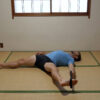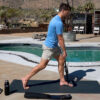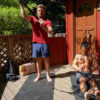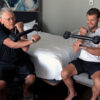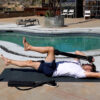The Best Way to Recover After Hiking is important to get back on the trail even stronger. Getting outside and hiking is one of the best forms of exercise you can do. Hiking gives you uneven surfaces which require you to step up and down exercising muscles you would not normally exercise when you are walking in the city or neighborhood. In addition, one of the best parts about hiking is the beauty of the outdoors and bringing the sights and entertainment into your workout. Getting outside and exercising are proven to boost your mood and release stress while enhancing your fitness. The best way to recover after hiking is to stretch and drink plenty of water or other hydrating liquids.
The Best Way to Recover After Hiking is even more vital when you are backpacking. Hiking with a heavy backpack adds another element, weight, to your uneven walking in nature. This added weight creates more of a workout and strength training for your core, legs, butt, and even your shoulders and back. The result of a more intense workout, more soreness, and the importance of recovering after hiking.
Benefits of Hiking
A benefit of a hike and especially backpack hiking is the set distance from which you are traveling. The set distance gives you a goal or a milestone that motivates you to work a little harder to complete the trek. The added difficulty and “extra mile” do you the favor of giving you more sore and tired muscles. But not to worry, Using your ISO-BOW is the best way to recover sore and tired muscles after hiking and make your muscles stronger.
Sore, tired muscles are a good thing as that is a step to getting stronger, but taking care of those muscles by stretching for a proper recovery makes a huge difference in your healing. Recovery is especially important if you are hiking the next day or days to come. Giving your muscles proper stretching and recovery will help you maintain your performance for the miles ahead allowing you to enjoy your hike even more.
The stretch does not have to be difficult or long and this is The Best Way to Recover After Hiking ensures you hit the main muscles used while you hike.
Luckily your ISO-BOW is a hiker’s best friend and enhances your stretching and recovery ability so you can get back to the trail with performance.
The Best Way to Recover After Hiking
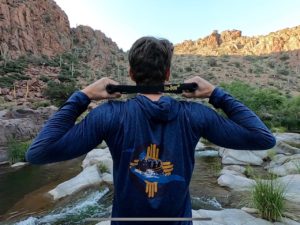
Remember to maintain steady and deep breathing. The longer you hold a stretch, the better.
Shoulder Mobility and Loosening
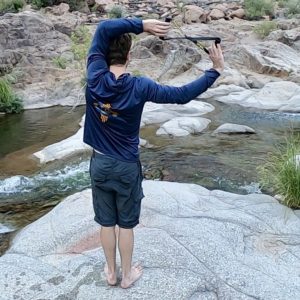
Keep slight tension on your ISO-BOW and move through your range of motion loosening up your shoulders and increasing blood flow. This should be done at your own pace and according to how your body responds in certain positions. Take your time and work through areas of tension/sticking points. Ensure you are always taking long deep breaths.
Shoulder Circles
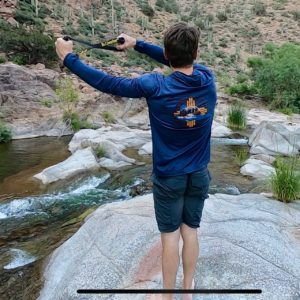
Stretch through your entire range of motion making large circles around your body in a clockwise then counter-clockwise motion. When you feel ready, try looping through your range of motion from fully extended overhead to coming down with your arms extended in front of your body towards your full extension below your waist and back up with your hands close to your body. Reverse directions.
Behind the Back Shoulder and Triceps
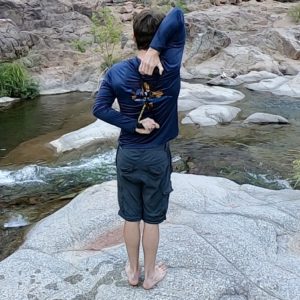
Place your top arm over your shoulder and grip your ISO-BOW behind your back from underneath. Point your top elbow to the sky and pull down with your bottom arm. When ready, reverse by pulling your bottom arm up using your top arm to stretch your biceps tendon. Repeat this portion of The Best Way to Recover After Hiking for both sides.
Behind the Back Biceps Tendon
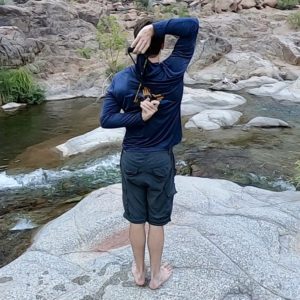
Place your top arm over your shoulder and grip your ISO-BOW behind your back from underneath. Point your top elbow to the sky and pull up with your bottom arm to stretch your biceps tendon. Repeat this portion of The Best Way to Recover After Hiking for both sides.
Forearms
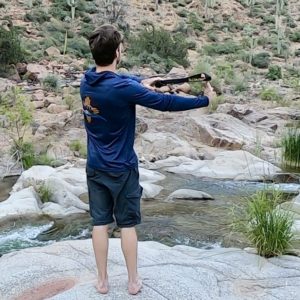
Place your ISO-BOW over your fingertips and pull your wrist and fingers back using your other hand. Ensure you switch grips for your opposite arm.
Legs, Hips, and Lower Back
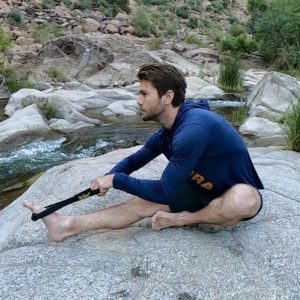
Your legs and hips are frequently used throughout hiking and can tighten up or even cramp during or after your day of hiking. Stretching your legs and hips releases tension and can help you avoid or reduce the risk of muscle cramps as well as loosen your lower back.
Seated Hamstring

Sit with your ISO-BOW over one foot. Place your opposite foot in your inner thigh to neutralize your opposite leg and not impose on the leg being stretched. Keep your back as straight as you can and pull yourself towards your foot hinging at your hips. Try to keep your stretching leg straight with your knee slightly bent. Ensure you switch sides for stretching both legs.
Lying Down Hamstring
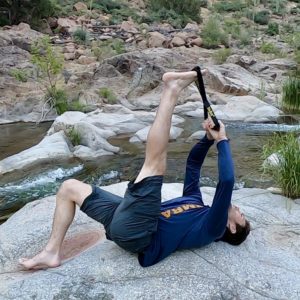
Lie flat on your back and extend your leg into the sky. Pull your foot towards your head with your leg acting as a lever (keep your leg straight and knee slightly bent). Ensure you do both legs for The Best Way to Recover After Hiking
Glute Medes and Lower Back
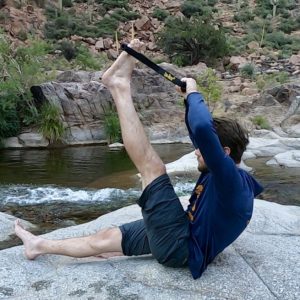
Maintaining the same position of the lying hamstring stretch, pull your head up towards your knee. This will help release tension and stretch your outer glutes and hip releasing tension in your lower back.
Inner Thigh & Groin
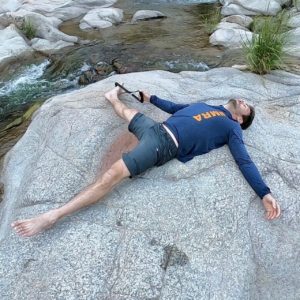
Keep your ISO-BOW over your foot and pull your leg over to the side of the leg being stretched. The lower to the ground and higher towards your head the deeper the stretch. Once you feel your desired stretch hold for as long as you find necessary. Ensure you perform this stretch for both legs during The Best Way to Recover After Hiking.
IT bands and Hips
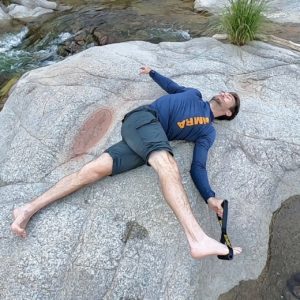
Hold your ISO-BOW with your opposite hand than your foot in your ISO-BOW and pull your leg across your body. Keep your shoulders and back on the ground while your hips stack over each other. Ensure you perform this stretch for both legs during The Best Way to Recover After Hiking.
ISO-MOTION Flow

Now that you have targeted your common muscles used during hiking take the last time of the routine to revisit areas that might need more attention or other areas that need stretching. Flow through your ISO-MOTION and listen to where your body might need some additional stretching to feel the benefits.
If you enjoyed the stretching routine, The Best Way to Recover After Hiking, please share with your friends and family and leave your comments and questions below. We enjoy hearing from you! Happy training and keep enjoying the great outdoors!
*Always consult your physician before engaging in physical activity.
